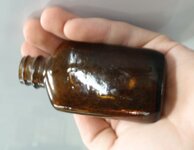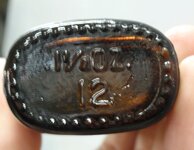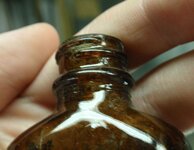metaldetectingtaylor
Full Member
- Mar 21, 2011
- 155
- 120
- 🥇 Banner finds
- 1
- Detector(s) used
- Minelab Explorer SE Pro
- Primary Interest:
- All Treasure Hunting
I found this at a house that dates to late 1700's. I figured this was early 1900's? I have no clue. any help would be great. It looks like a medicine bottle to me. It says 1 1/2 oz and then 12 underneath that.





